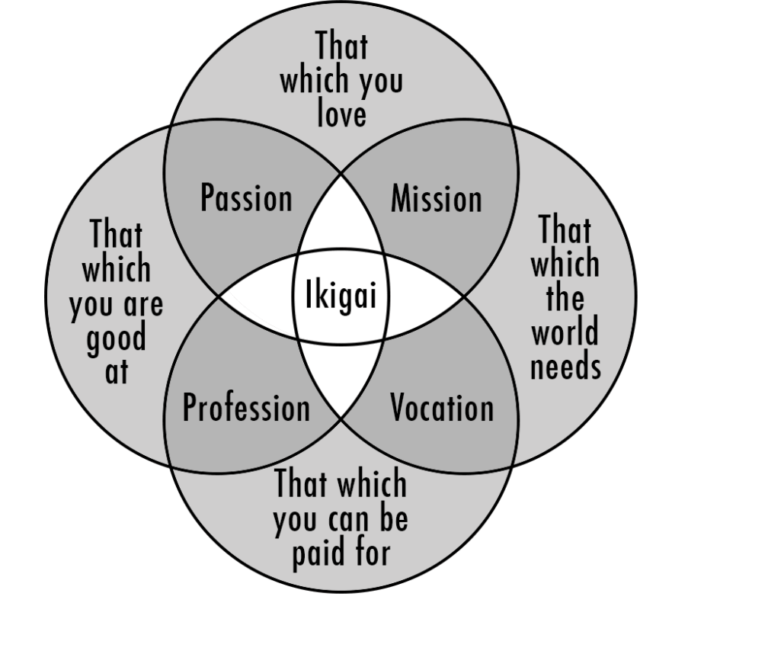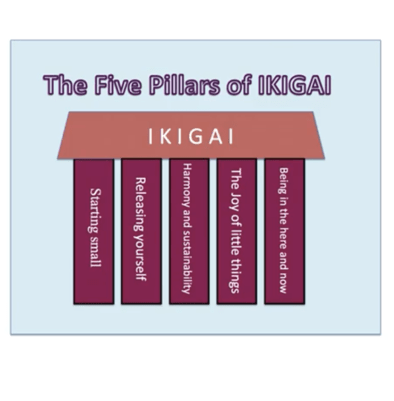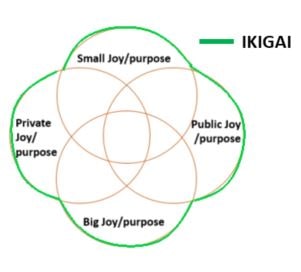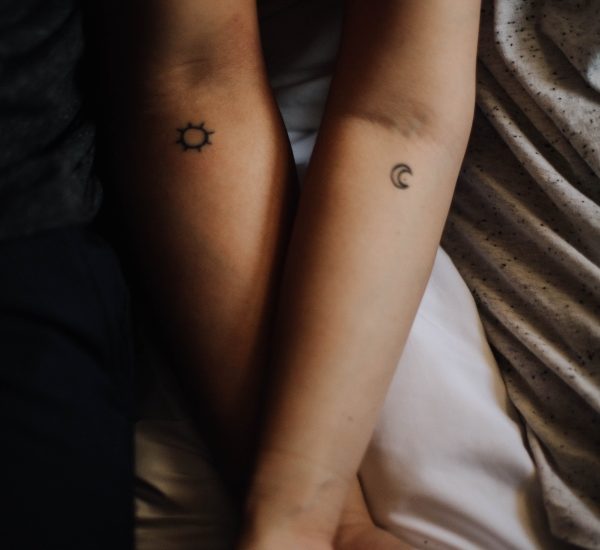How To Find Your IKIGAI?

Images Photo by Xan Griffin on Unsplash
The Secret to Your True Life Purpose and happiness
I’m here today to share with you that it’s no longer a truth. It doesn’t have to be mutually exclusive choices. Understanding and defining a clear ikigai could be the common thread that ties all of these things together.
The question of life purpose is one that has haunted humanity since the dawn of our existence. Many ancient indigenous cultures took the time and effort to honour and contemplate the question of life purpose through ceremonies & rituals that were all designed to help reveal the essential role that each individual member was born to play in the larger society and life as a whole. Unfortunately today this question no longer receives anywhere near the attention, contemplation and reverence it deserves and requires.
For many, our decisions around life purpose unfold in a more reactionary way, propelling us into educational, professional and life-directional paths. However, often these paths are based on societal expectations rather from one’s inner desires.
It certainly happened to me that way when after achieving all material success, I left with a bigger void inside which led me on a self-discovery and transformation journey. The truth is, if there was ever a time on our planet where a sense of true purpose was needed, required, or desperately called for, now would be that time.
But amidst the multi-layered and multi-pronged pressures presented by our modern world, how does one go through the real discovery without abandoning all responsibilities?
Well, the Japanese offer a unique approach to this which is known as Ikigai. In this blog post, you will learn the true meaning of Ikigai with practical steps to apply in life.

To thine own self be true.
- William Shakespeare
What is IKIGAI?
The concept of ikigai is of Japanese origin. In the absence of direct translation, the closest English translation of this Japanese word “ikigai” (pronounced “eye-ka-guy”) is “Reason for being or living”.
Ikigai – iki (life) + gai (reason)
It’s about pursuing and living a lifestyle that is fuelled by passion & values. It is the art of joyful living in the present moment. Ikigai strives to balance the philosophical aspects of life with practical daily living making a really easy and attractive concept to incorporate in everyday life.
This concept also resonates with the modern Cognitive Behavioral Therapy’s emphasis on pursuing activities that produce enjoyment and a sense of mastery, specifically as a way to alleviate the depressive disorder. Ken Mogi, a famous Japanese neuroscientist and author of Awakening Your Ikigai (2018) says that ikigai is an ancient and familiar concept for the Japanese, which can be translated simply as “a reason to get up in the morning” or, more poetically, “waking up to joy.”
Living your ikigai gives you fulfilment even amid an ordinary life by living authentically and intentionally. This way of living liberates you as you no longer have to live for a milestone where you look forward to the next vacation or weekend celebration to enjoy life. Ikigai helps you to enjoy the life journey in the present moment rather than focusing on the destination.
Ikigai balances your day-to-day life and instils a sense of harmony across daily routine and lifestyle, bringing meaning & joy to even the most ordinary tasks. It makes your ordinary daily moments into extraordinary memories. It can also combine the joy from doing something you love and/or earn money with a sense of purpose or meaning. Although your ikigai doesn’t need to be always associated with purpose or career.
There is a misconception that ikigai is having a career that you love. In reality, it is not true. Your ikigai can be anything personal or professional big or small. This misconception is often due to the western interpretation of this concept based on an inspiring blog article written by Mar Winn back in 2014. I will explain why this is a myth later in the post.
Japanese believe everyone has ikigai and it’s unique to them. It’s cultivated based on individual life experiences, values, beliefs and personality. It’s a personal journey that may take time and may evolve depending on different phases of your life. The beauty of ikigai is you can have more than one and it evolves as you grow.
Examples of Ikigai:
- The Runner – There are times when my body hurts and I just want to stay on the couch, but I’ll resist and get myself out to the nature running trails.
- The Software developer – It fuels my soul when I’m able to problem solve and deliver a solution that makes my customer’s life better.
- The teacher – My reason to get up in the morning is to help develop the foundation of the next generation leaders- our children.
- The mother– Becoming the best version of myself and leading by example for my kids is my ikigai.
The Western interpretation of Ikigai

Although Japanese people have been living and embodying ikigai- this ancient wisdom for centuries, it got popular in the western world only in recent years. One of the early adopters is Marc Winn – a blogger who summarised his interpretation of ikigai in the above diagram after watching Dan Buettner’s famous TED talk on How to Live to 100+.
This blog post and diagram soon went viral and subsequently formed the basis of many other bloggers, author’s, life coaches and HR managers work.
According to Mark Winn,” ikigai lies at the cross-section of those interconnecting circles. If you are lacking in one area, you are missing out on your life’s potential. Not only that, but you are missing out on your chance to live a long and happy life.”
- Are you doing something that you love?
- What does the world need?
- That you are good at?
- And that you can be paid for?
However, this is not an authentic version of ikigai based on the Japanese. When I first came across ikigai almost 2 years back, I was very curious and wanted to apply this concept into my life as I was going through a journey of self-discovery and life transformation. However, when I researched and deep-dived, I came across the confusion around the interpretation of this concept. That’s why I would love to share the authentic concept with you all in this blog post.
According to this western adapted version, Ikigai is achieved when the four conditions are met. For example, if you are passionate about a baker (love & good at) who runs a bakery in a local community (earn money & community needs) then you have found your ikigai. So according to this adapted version, if you are doing something you love, but it isn’t generating you money, then you haven’t achieved ikigai – this is simply not true. The major criticism of this model is that one must strive to align all four conditions or components.
However, the Japanese do not necessarily ask themselves these questions when they are contemplating their ikigai(s) or resonate with this framework.
The Japanese interpretation of ikigai


Famous Neuroscientist and author of the “The Little Book of Ikigai” book Ken Mogi beautifully explained the concept of ikigai which captures the key essence of this ancient wisdom in my opinion.
In this book, Ken Mogi states the joy of little things as one of five pillars of ikigai, with the idea that the small things that give you pleasure in everyday life can contribute to your sense of ikigai initially before creating this as a grand mission.
According to Ken Mogi “Ikigai can be something small or something big. It’s such a natural way of living to native Japanese that they don’t need a framework to follow. So, in a nutshell, ikigai is a spectrum. The complexity of ikigai actually reflects the complexity of life itself. So, in order to be a master of ikigai, you really need to appreciate how complex and rich life actually is.”
According to the author, the best representation of ikigai is the above diagram alongside with his prescribed 5 pillars from the book. Ikigai can be found in small or big or public or private joy and purposes. It’s the entire spectrum outlined in GREEN line.
Ken Mogi stresses the importance of one should find their private way to reach a very universal goal. To do that they really need to understand themselves first. Pursuing one’s private joys and purposes in life often leads to social and bigger rewards. So finding ikigai is also a process of self-reflection. This is why this concept is appealing to me and so many others.
Ken Mogi’s 5 pillars of ikigai
- Pillar 1: Starting small
- Pillar 2: Releasing yourself
- Pillar 3: Harmony and sustainability
- Pillar 4: The joy of small things
- Pillar 5: Being in the here and now
How did I find my ikigai?
When I was at the rock bottom in 2017, I wasn’t fulfilled professionally. The same career which I loved before somehow turned to be very routine and uninspiring leaving me a huge void inside. Months after months gone by thinking it might be just a phase. But nothing really improved.
At a surface level, I had this amazing career and earned really good money. But day after day, I returned home and kept wondering & asking myself “Is this why I came to this world?” “Am I just meant to work and earn money in life?”. I left without any answer – feeling lost, unmotivated searching meaning for my existence.
That’s when I realised the truth that I’m not going to find the answer externally. I had to go inward to really identify myself, things lit a fire inside my soul, things I’m good at, ways I wanted to serve others.
During that time, I applied the concepts of ikigai & Find your WHY. The results were simply transformative and life-changing to say the least. Because of these frameworks, I have managed to build this abundant, fulfilling life I’m living now with 100% clarity of my life mission.
Before you discount me thinking I’m extraordinary, let me tell you I’m not. I’m a simple, ordinary person who just happens to deeply believe in limitless human potential and constantly challenging own potential. Like many others, I had my fair share of dark periods. My purpose is to share this wisdom and techniques so that you can apply right now today and build your dream life.
Personally, I’ve applied a modified version of both Mark Winn & Ken Mogi’s framework to identify my ikigai. Firstly, I applied Mark Winn’s method to uncover insights about my passion, skills, mission & purpose. Secondly, I then applied Ken Mogi’s 5 pillar framework to apply in daily life.
In the upcoming section, I’ll use myself as an example to demonstrate how I’ve came up with my life purpose & ikigai so that you can easily understand.
Questionnaires to uncover my insights using Mark Winn Ikigai diagram-
I love innovation, technology, learning & experimenting with new and ancient wisdom to improve myself to the better version. I enjoy sharing knowledge and helping others.
Help others to intentionally design an abundant, fulfilling life they deserve.
Problem-solving, taking a concept from ideation to execution, listening, connecting with others at a deeper level, dealing with ambiguity, bringing people together.
Personally, I don’t think passion needs to always turn into a full time profession. But as an example, I still can make my blog and coaching business as my primary profession in future if I want.
How to find your ikigai?
Let’s have a look at how to find & apply ikigai once you've uncovered insights about your passion, purpose, skills, profession using Ken Mogi's 5 pillars.
Pillar 01
Starting small
The first step can be achieved easily. It’s all about taking baby steps. Reaching a big goal takes time, it involves going one step at a time and pivoting when required. Especially if you want to find an answer for big life questions like your life purpose & mission. Often you may have little or no clarity at all on day one. That’s the reason I agree with Ken Mogi that once you find your own small private joy & purpose, it will eventually lead you to answer the big question about your life purpose.
As an example, day 1 I had no clue about my life purpose. All I knew is that the past circumstances were not serving me and I wanted more from life. That thought led me to become more curious about myself and my passions. I was always passionate about technology, learning, experimenting new ways of living and self-improvement. Once I got any results after applying the tools, I used to love sharing with my friends and family to help them to achieve the same. That used to give me deep joy.
So, I started experimenting with new concepts and tools initially with my health and weight loss. Then it opened up a whole new door to me about mindset, spirituality & holistic wellness. The more tools, frameworks I applied, I got results and I created pockets of joy in my daily life. Soon I started to look forward to all the new hobbies and rituals I created in my day to day life. Suddenly, I found joy in the most ordinary days.
After years of experimentations & developing myself and helping others, I finally identified my ikigai is to inspire and help others to intentionally create an abundant, fulfilling life. That’s when this blog was born earlier in 2020.
According to Ken Mogi “Crucially, starting small is the hallmark of youthful days. When you are young, you cannot start things in a big way. Whatever you do, it does not matter much to the world. You need to start small. And what you have in abundance is open-mindedness and curiosity, the great kick-starters devoted to one’s cause.“
Pillar 02
Releasing yourself
While I’m a strong advocate of self-improvement, I also preach self-acceptance. The greatest gift & freedom you can give yourself is by accepting & embracing your authentic self. Period.
You don’t need to impress or receive validation from anyone. We all have flaws and imperfections. We’ve all been broken once or many times, yet here we are. The moment you accept yourself life the way you are and make a commitment to work on things you want to improve on, life flows and you’ll be happier.
For example – if I need to make significant transformational impacts on others, one of the skills I need is excellent story-telling and communication. Right now, I’m good but not great at this skill. So I accepted the reality and continue to work on learning and practising my craft.
Remember perfectionism is an illusion and we often use this as an excuse so that we don’t have to take any action.
Start with the way you are and all the resources you have today. You’d be surprised to find out that often you already have more resources than you’d think you need.
Pillar 03
Harmony & sustainability
Even though we live in a society of individuals, we still have to rely on others. Humans are social animals. Fundamentally, we seek connections to live a healthy, happy life. Connection with inner self, nature and others. In ancient times, humans gathered for ceremonies, rituals in family groups or tribes frequently to bond and help others. We have physical, emotional, the social need for connection with others.
When we pursue to seek fulfilment in our own lives, we must also consider how this can serve others. It doesn’t always have to be a grand cause. It can be serving your family, community or any specific group or cause.
Ken Mogi says “..on an individual level, ikigai is a motivational structure to keep you going, to help you get up in the morning and start doing chores. In Japanese culture also, ikigai has much to do with being in harmony with the environment, with people around you and with society at large, without which sustainability is impossible. Sustainability applies not only to man’s relation to nature but also to the modes of individual activities within a social context.
You should show adequate consideration for other people, and be mindful of the impact your actions might have on society at large. Ideally, every social activity should be sustainable.“
Pillar 04
The joy of small things
This is one of my favourites. The daily ritual is something I love and look forward to daily after a busy hectic day. Every evening, I dedicate some ME time after an evening run, exercise to nourish and pamper my body. It doesn’t have to be fancy all the time. Simply dry body brushing before shower, oil massage, a warm cup of infused tea, and a book to read or meditate. That’s it. Small rituals like this give me enormous joy in life nowadays.
You can simply create a daily/weekly ritual to honour, nourish, and pamper your beautiful earth suit you’re gifted. Save sacred ME time for yourself. Be fully present and connect with your body. Touch your body, feel it, and listen to what your body and soul is whispering. Also, dedicate a small amount of time to pursue your hobbies and passions that create joy in your spirit.
Make the joy of little things work for you, then you’ll find your ikigai automatically.
Pillar 05
Being in the here & now
Being in the present moment is something I mostly struggled with in the past. But I noticed, when I cultivated small joys in day to day life doing things I enjoy, I was more present at the moment.
How often do you catch yourself when having a conversation with a friend or family but your mind is somewhere? We tend to think a lot about the past and the future, but the former is gone, and the latter is uncertain.
Being present and conscious about the here and now is not that easy, but when we do it, we start enjoying the small things in life more.
Now that you understand the concept of ikigai, start practising the ikigai pillars in your life. Let’s begin the journey by asking yourself what you love, what you are good at, what you can be paid for now, and what the world needs. With these answers, follow the 5 steps process to get one step closer to your ikigai.
Share with us your best tips for finding your purpose and living authentically.
I would love to hear from you, so please tag me @iamtaslimbegum on Instagram.
Lots of love & light from my soul to yours!
Taslim
P.S. Please remember to always consult with your doctor or health practitioner before trying any new health, diet, or lifestyle practice.
Book Recommendations
This site may receive small commissions for purchases made through links in this post through affiliate websites.



